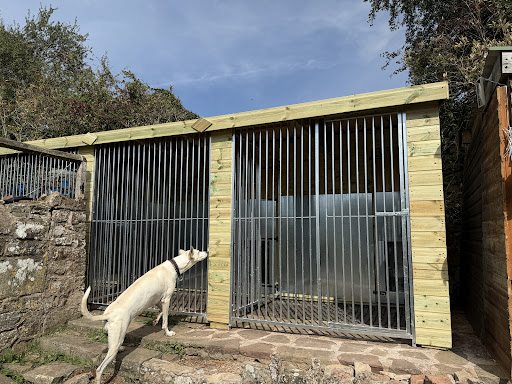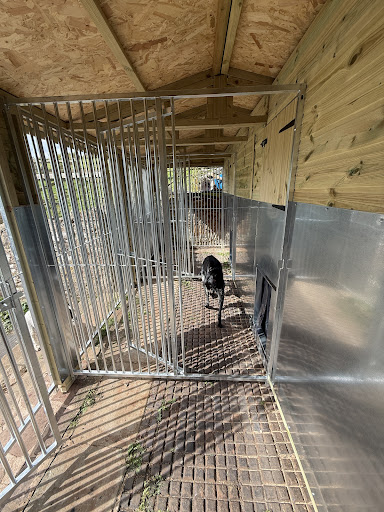If you have a dog, then the question of raw vs kibble dog food has probably crossed your mind at least once or twice; afterall, wanting the best for your furry friends is only normal. It’s understandable to wonder what kind of food is best to give your pup, as there are many benefits and disadvantages to both types of diet. This article will explore the advantages and disadvantages of both types of dog food, so you can make an educated decision on how best to feed your dog.
The debate between raw and kibble dog food
As you may have guessed, the debate between raw and kibble dog food is a heated one. The cost of raw dog food vs kibble is also hotly debated. Raw dog food advocates say that the best food for working dogs is raw because it contains all of the natural nutrients they need to do their job and stay healthy, while kibble proponents say that kibble has all of the nutrients necessary for a working dog in addition to being more affordable than raw.
The pros and cons of each type of food
Some people believe that raw dog food is the best food for working dogs. They argue that raw dog food provides more nutrients and can help keep your dog healthier. However, this isn’t always true. There are many benefits to feeding your dog kibble as well. The biggest pros of feeding your dog kibble is that it’s much cheaper, especially if you buy in bulk and there are also options available for dogs with special dietary needs.
Raw food
Raw dog food is made from natural ingredients such as: beef, chicken, lamb, peas, spinach, carrots, and blueberries. It can be homemade, store-bought, freeze-dried, or dehydrated
Advantages
The natural ingredients included in this food each have their own advantages for your dog’s health and wellbeing – promoting heart health, increasing energy levels, shiny coats, better smelling breath, improved eyesight and positive impacts on your dog’s stool.
Certain raw dog food brands work with canine nutritionists to develop cooking methods and personalised formulas perfect for your specific dog’s needs. This is particularly beneficial for working dogs who have specific requirements, such as requiring more protein in their diet, or specific allergies they require alternatives for.
Another benefit of raw food is that it is often more ethical in regards to the ingredients used, with these foods being bought from reputable farms with no fillers, artificial colours or flavours being added to the mix. Certain companies then do all the preparation for you, increasing the convenience of preparing meals for you dog and saving you time in the long-run.
Drawbacks
It is important to be aware that homemade diets don’t have to go through as many compulsory tests as kibble food. The Merck Veterinary Manual warns “Most homemade diets do not undergo the scrutiny and rigorous testing applied to commercial complete and balanced diets, If pet owners wish to feed their pets homemade diets, the diets should be prepared and cooked using recipes formulated by a veterinary nutritionist.”
There is also the big factor of convenience, with homemade diets for your dog requiring time out of your routine for research into the kind of raw food your dog needs; shopping for the ingredients; preparing with malicious care and cooking the meals if your dog has specific medical conditions such as cancer or pancreatitis. Puppies also require cooked food.
Experts have recently started advising that dogs with raw diets should not share homes with younger children or those with compromised immune systems due to the possible risks involved.
Other important factors: Cost
One of the main factors is the cost of raw dog food vs kibble. It is noticeable that raw food does cost more than standard supermarket bought kibble, but overall, it comes in significantly lower than premium kibble per 300g. Using the example of a 12kg dog, the cost of raw would be around £1.25 per day.
See raw dog food options.
Kibble Food
Kibble (also known as dry dog food) includes ingredients that vary brand-to-brand; Ingredients in kibble are required to contain a high balance of nutrients that match the need of the dog, working dogs in particular need kibble that includes higher levels of nutrients.
Advantages
The manufacture of pet food in the UK is highly regulated – there are more than 50 pieces of legislation governing the manufacture of pet food. Foods for all animals are governed by the same legislation and, as farm animals form part of the human food chain, the laws are necessarily stringent. This means that you know exactly what’s in the food you’re giving your dog, especially beneficial for dogs who have allergies and other medical conditions such as cancer and pancreatitis. It is also advised that puppies have kibble as their diet whilst their digestive system and immunity builds up.
Required ingredients include: protein sources such as beef, poultry, fish, and eggs; grains; cereals; and vitamins, minerals, and antioxidants – these ingredients have the benefits of reduced dental plaque and healthier gums. All dry dog food needs preservatives to prevent the fat from becoming rancid. Some brands are heavy on carbohydrates or have low-quality ingredients and added sugar which is beneficial for work dogs who need to maintain a certain weight and have a high carbohydrate based diet.
Unlike raw food, kibble food is a lot easier to store and prepare, with the reduced risk of the food spoiling. This allows you to save time you would have otherwise spent preparing the food.
As mentioned above, one of the main benefits why people choose kibble food is the reduced costs associated with it if standard food is bought in a large bulk. These large bulks allow for higher convenience levels as less shopping trips will be needed, with this food lasting a lot longer before spoiling.
Drawbacks
Drawbacks include the nutritional side of kibble, with some working dog owners claiming that Many of the nutrients in kibble are lost during the high-heat process; flavour enhancers and synthetic nutrients are added to replace what has been lost. This is also the case with the artificial colouring used, as many food dyes, referred to by the Center for Science have been banned because of their negative effects on laboratory animals. This report finds that several of the nine approved food dyes could be causing serious health issues, including cancer and hypersensitivity reactions. Kibble is also associated with low-moisture levels that can eventually cause symptoms of dehydration in dogs.
See kibble dog food options.
What type of working dog you have
Every dog is different, but there are a few types of working dogs that are most common. Herding dogs like Border Collies and shepherds have high-energy jobs, so they need a diet higher in protein than other breeds – searching for higher protein diets for these kinds of working dogs is advised. However, since they eat more than other breeds to build up these protein levels, the cost of raw food can be prohibitively expensive for these working dogs.
Hunting and sporting dogs like Labradors or Golden Retrievers typically need to maintain weight as well as energy levels during the work day. Their diets should also contain high amounts of carbohydrates and fat to keep them fueled.
In terms of convenience and costs, hunting and sporting dog owners usually feed their dogs kibble because it is less costly than raw dog food over time.
With each dog being different it is important to take into account the factors below:
Health: A balanced, nutritional diet is critical to maintain good health.
Activity level: Working dogs and service dogs have different calorific requirements than household pets.
Age & Size: National requirements differ between puppies and adults. Large breeds and small breeds.
Food allergies: Some dogs are allergic to specific proteins or ingredients such as eggs, corn, wheat, soy or milk.
Taste: No matter what you think dogs have a sense of taste and smell just like humans do, meaning the taste, smell and texture of the food you buy your dog should be taken into account.
Your lifestyle: Sometimes life gets in the way, meaning that always shopping, cooking and prepping food for your dog isn’t always practical. You may also be on a budget meaning buying your dog more expensive food isn’t feasible right now.
Making the decision
The decision to feed a dog raw food or kibble is personal and will depend on a number of factors. If you are considering feeding your working dog raw, it’s important to consider the cost of raw dog food vs kibble, not just the perceived benefits of high nutritional value. You should also consider whether your dog has any dietary restrictions or health problems, as well as what type of work they do.
There is also the big factor of if you have a big enough budget and plenty of time to prepare and buy these meals regularly.
The best way to determine which is the best option for your working dog may be to try both methods and see what works best!
Looking for something to put this food in? Why not shop our durable dog bowl range?

























